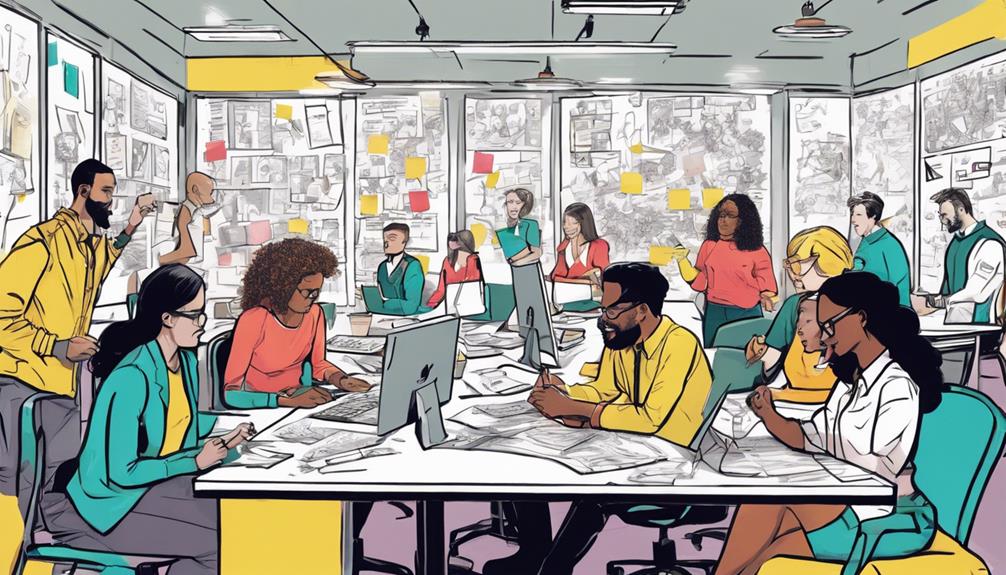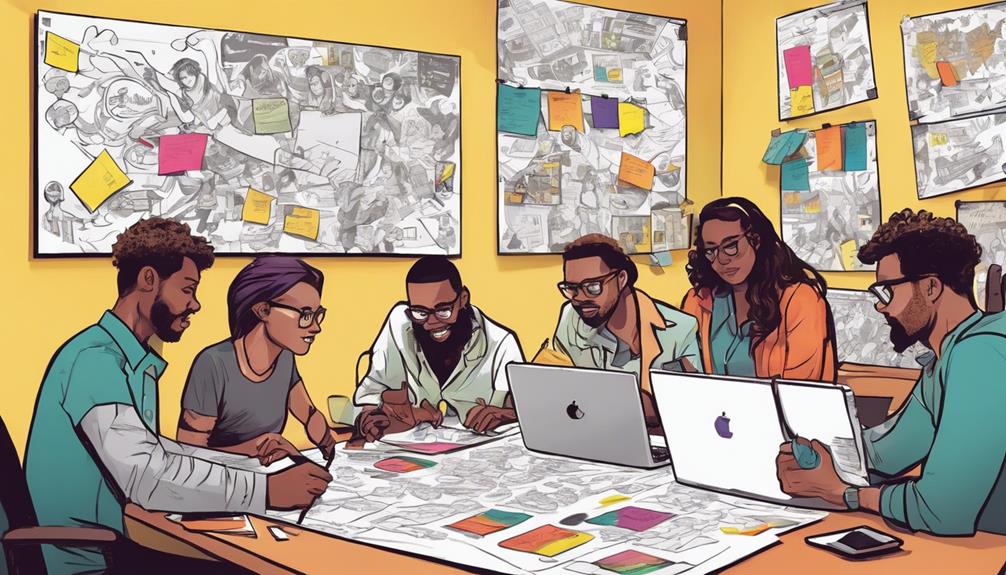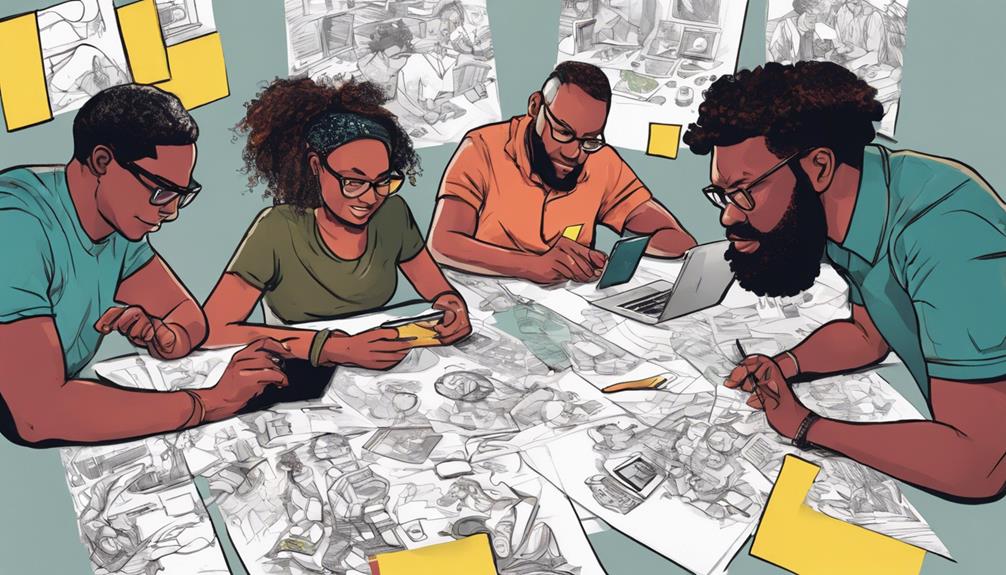Embrace the design thinking mindset for ultimate success! Implement problem-solving, empathy, and creativity in your approach. Embrace failure as a stepping stone and learn from setbacks. Balance high standards with a growth mindset for continuous improvement. Seek feedback, engage in design sprints, and take consistent small actions. Foster teamwork and collective intelligence. Failure acceptance brings valuable lessons, propelling personal growth and success. Each setback gets you closer to triumph. Innovate by taking risks and embracing failure. Propel towards your goals with resilience and collaboration, fostering a path of innovation and growth. You're on the road to success!
Key Takeaways
- Cultivate empathy and creativity through understanding user needs.
- Embrace failure as a stepping stone to success and learning.
- Foster collaboration and ideate innovative solutions.
- Balance high standards with a growth mindset for continuous improvement.
- Use prototyping and feedback for resilience and creative problem-solving.
Key Principles of Design Thinking
What're the key principles that drive the essence of design thinking?
Design thinking is a problem-solving process that revolves around understanding the user's needs, defining the problem, ideating solutions, prototyping, and testing with users.
This approach fosters a design thinking mindset, emphasizing empathy, creativity, and collaboration throughout the entire process. By focusing on the user and their experiences, design thinking ensures that solutions are tailored to meet real-world needs effectively.
Incorporating design thinking principles into your work can lead to enhanced creativity, user satisfaction, and efficiency. This user-centered approach not only benefits product development but also extends to services, business strategies, education, and healthcare.
Understanding the core principles of design thinking is essential for successfully implementing this approach in various industries.
Overcoming Fear of Failure

Embracing failure as a learning opportunity is essential for personal growth and professional development. It's pivotal to understand that failure isn't the end but a stepping stone towards success. When faced with a setback, focus on analyzing the situation to understand the problem thoroughly.
Instead of getting discouraged, view failure as an opportunity to learn and grow. Building your way forward from failure involves using prototyping to test ideas and strategies. Remember, it's okay to go back to the drawing board and make improvements based on what you've learned.
Overcoming the fear of failure is a journey best taken together. Work with colleagues or peers to share insights, seek feedback, and support each other through challenges. By embracing failure as a natural part of the learning process, you'll develop resilience, creativity, and adaptability.
Impact on Academic and Professional Life
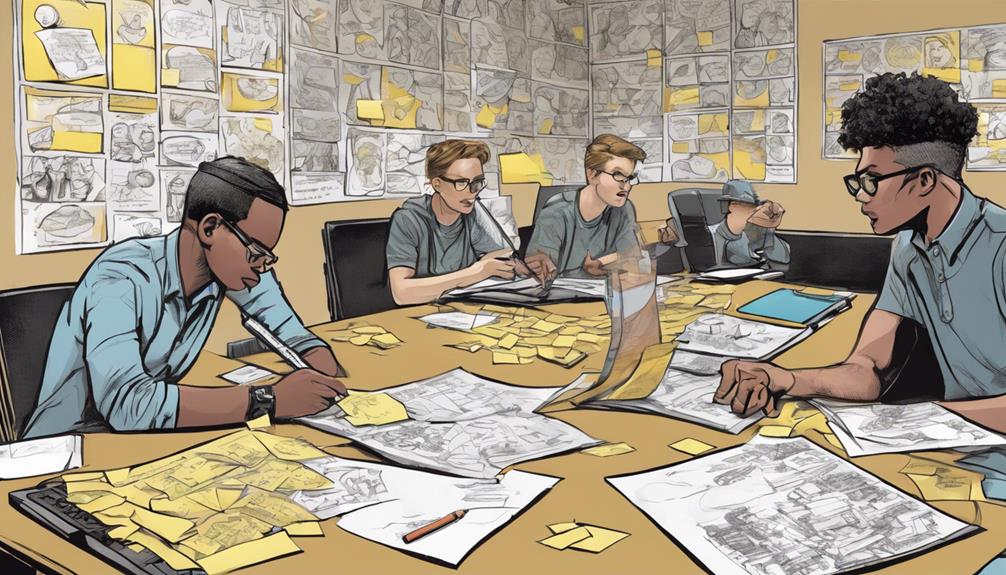
Balancing high standards with a growth mindset is important for successfully managing the impact of overcoming fear of failure on both academic and professional life. Embracing the Design Thinking process allows you to better understand the value of failure as a stepping stone towards success. By deviating from your norm and accepting failures as learning opportunities, you can move forward with confidence in your academic and professional pursuits.
Fear of failure can often lead to inefficiency and self-criticism, hindering your productivity and growth. However, by embracing the Design Thinking mindset, you can avoid the woe of perfectionism and instead focus on continuous improvement and innovation. This shift in perspective enables you to approach challenges with resilience and creativity, ultimately propelling you towards personal development and success.
Tools and Strategies for Success
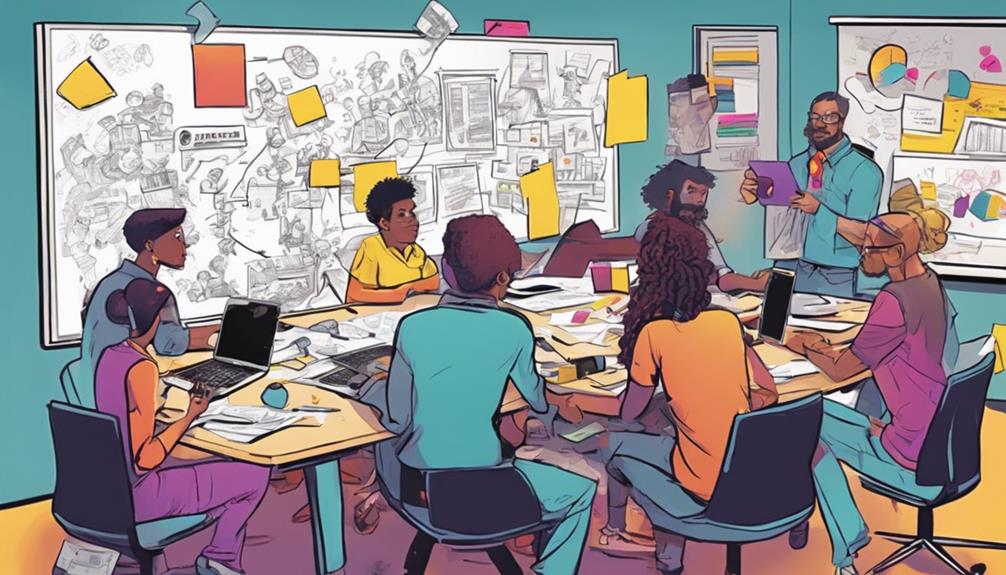
Utilizing practical tools and innovative strategies can greatly enhance your ability to overcome fear of failure and achieve success in academic and professional endeavors. When navigating the path towards your goals, consider the following:
- Adopt the 'do something mindset':
Taking small actions consistently can help you build momentum and confidence in your abilities, ultimately propelling you closer to success.
- Seek feedback and collaboration:
Sharing your ideas with others and being open to different perspectives can lead to innovative solutions and personal growth. Embrace the power of teamwork and collective intelligence.
- Engage in design sprints:
Embracing the design sprint methodology allows you to tackle challenges with a structured approach, helping you to see the big picture while exploring different angles. Being aware of the process can make you more adaptable and resilient in the face of uncertainty.
Transformation Through Failure Acceptance

To truly grow and evolve, one must embrace the valuable lessons that failure brings. Designers know that transformation through failure acceptance is vital for personal development. It's about understanding that failure isn't the end but a stepping stone towards success.
When faced with challenges, it's crucial to approach them with the right mindset and view them as opportunities to learn and improve. Embracing failure allows you to pivot, reassess, and tackle the problem from a different angle. It might take several attempts before finding the solution, but each failure brings you closer to success.
Another important aspect of transformation through failure acceptance is the willingness to try something new. By stepping out of your comfort zone and exploring uncharted territory, you open yourself up to endless possibilities. Designers understand that innovation often stems from taking risks and being unafraid of failure.
Frequently Asked Questions
What Is the Design Thinking Mindset?
The design thinking mindset revolves around human-centered design principles like empathy, creativity, and innovation. It encourages learning from failure, embracing experimentation, and maintaining a bias towards action. It fosters collaboration, problem-solving, and holistic approaches.
Why Should We Embrace Design Thinking?
To achieve success, embrace design thinking for its proven benefits like enhanced creativity, collaboration, and user satisfaction. By focusing on empathy, ideation, prototyping, and user testing, you can drive successful outcomes in various industries.
How Design Thinking Helps in Making a Design Successful?
Design Thinking helps you make a design successful by focusing on empathy, defining problems, generating ideas, creating prototypes, and testing with users. It boosts creativity, collaboration, and user satisfaction, ensuring a user-centered approach for ultimate success.
What Are the 7 Mindsets of Design Thinking?
To embrace the design thinking mindset, focus on human values, experimentation, and the process. Be people-centric, cross-disciplinary, and comfortable with ambiguity. Maintain a beginner's mind, curiosity, and an innovation mindset to achieve ultimate success.
Conclusion
To sum up, embracing the design thinking mindset can lead to ultimate success in both your academic and professional endeavors.
By overcoming your fear of failure and utilizing the key principles and strategies of design thinking, you can transform your approach to problem-solving and innovation.
Remember, Rome wasn't built in a day, so don't be afraid to fail forward and learn from your mistakes.
Keep pushing boundaries and thinking outside the box for maximum impact!

